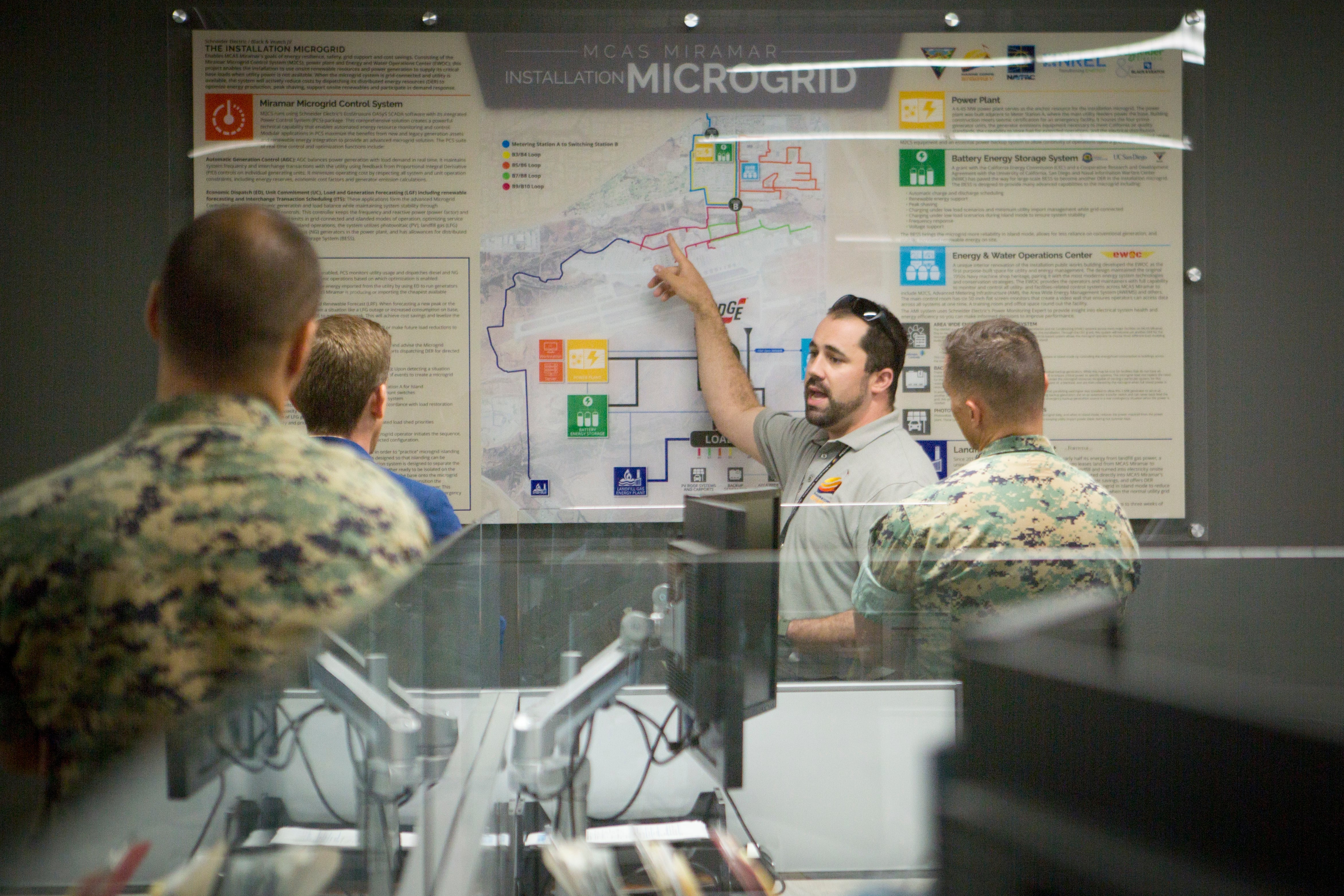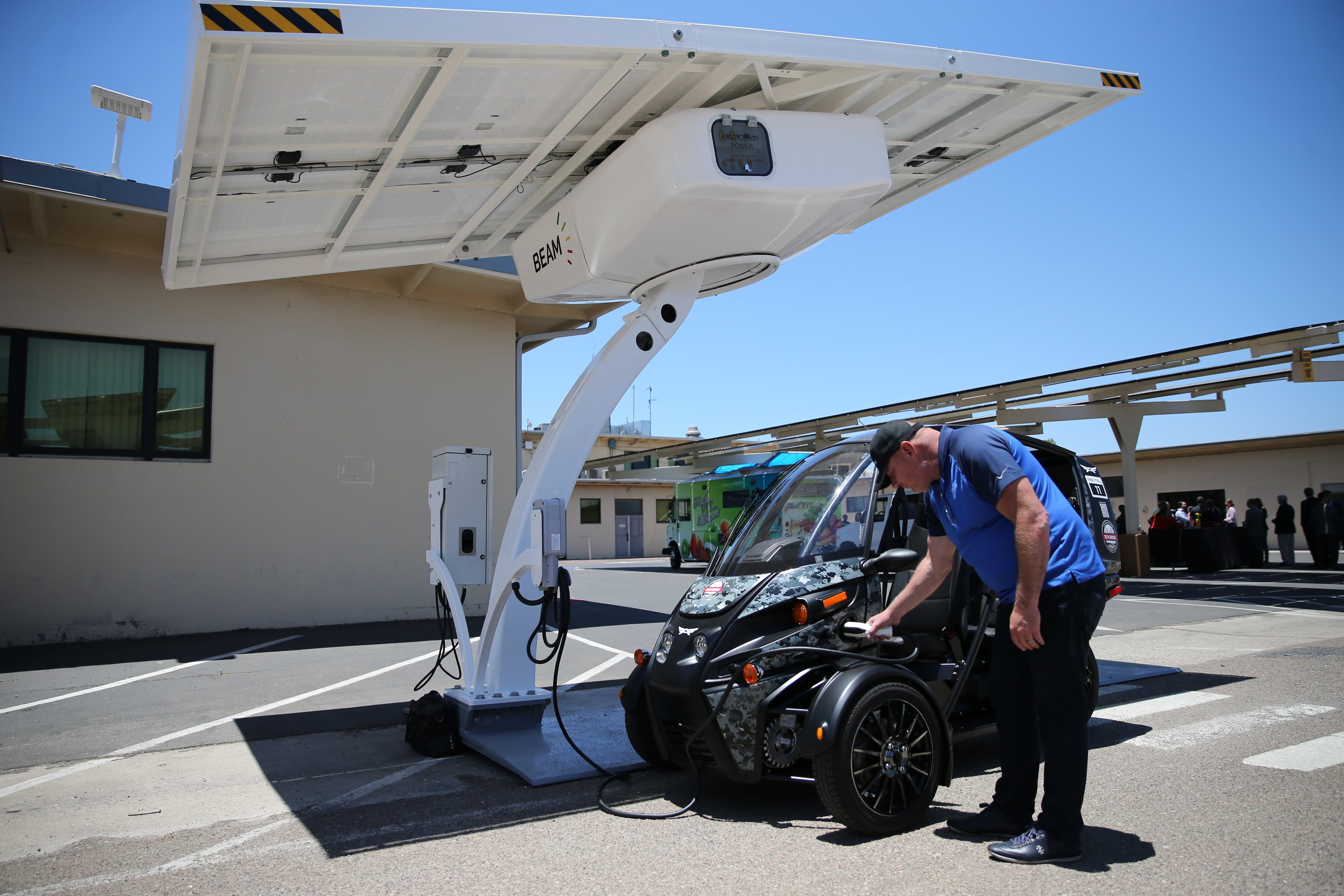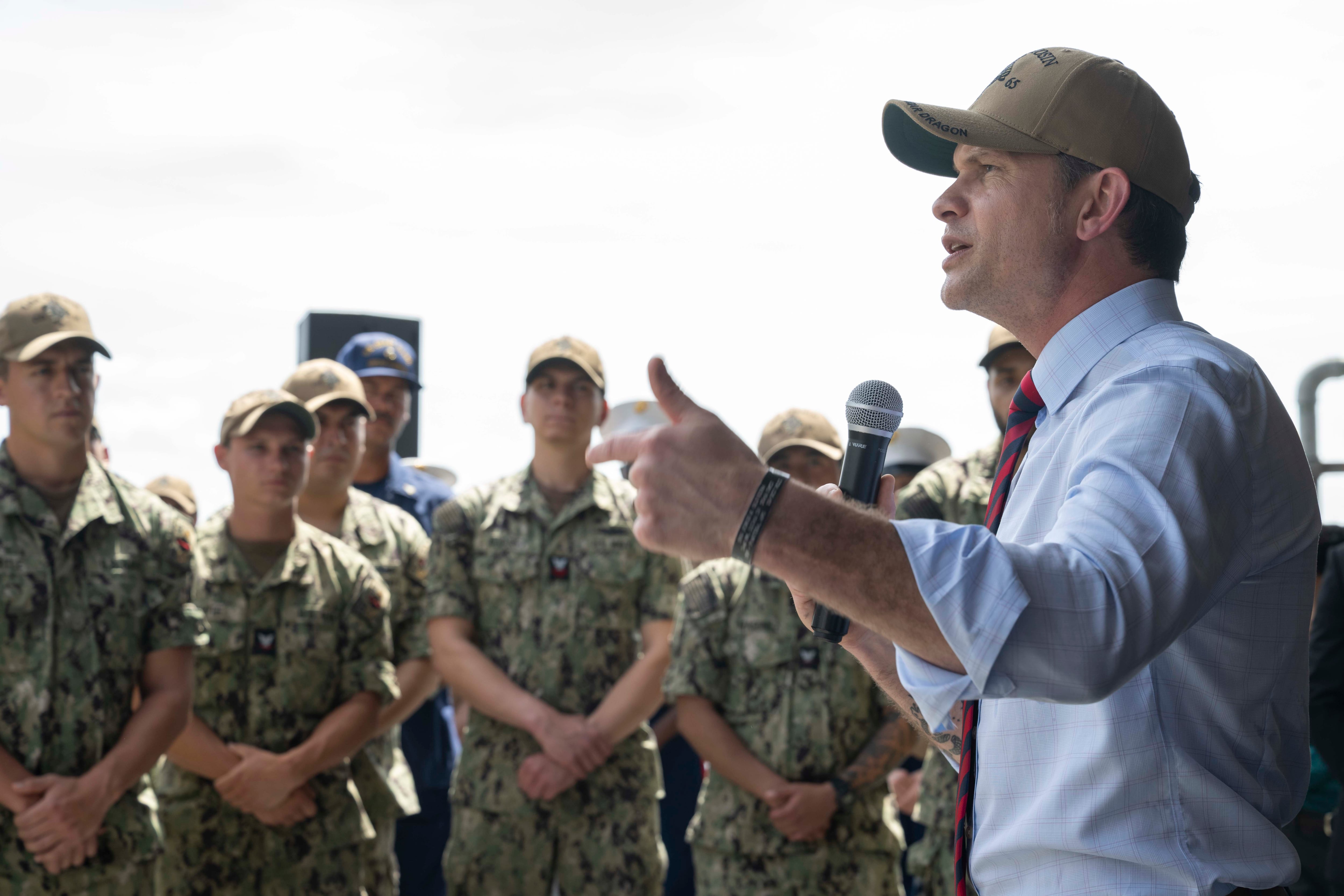WASHINGTON ― Marine installations from West Coast air stations to deep South depots are getting an electric facelift as the Corps ramps up its electric vehicle fleet and base “smart grids” for powering the force at home stations.
Following new executive orders to reduce carbon fuel use that would also make for resilient, blackout-proof power grids, the Corps is adding solar panel and renewable energy options with sophisticated software power management at installations such as its air stations, bases and depots in Miramar and Twentynine Palms, California; Yuma, Arizona; Parris Island, South Carolina and Albany, Georgia, officials said.
At the same time the service is finding the “sweet spot” for its nontactical electric vehicle fleet, one official over that program said Tuesday at the 2022 Modern Day Marine exposition in Washington.
And that work is slightly more involved than simply swapping out some charging stations and buying a few Teslas.
The service runs detailed energy resilience readiness exercises at various levels to blackout-proof the location’s power, Walter Ludwig, director of public works for Marine Corps Installations Command, told the audience.
They “can’t put microgrids in place” regardless of power supply ― solar, geothermal or simply diesel generators ― without testing those assets, Ludwig said.
And how are they doing that?
That’s the framework of energy resilience and readiness exercises that his team runs on all of these systems.

The basics include three levels of exercise, starting with a table top exercise that gets everyone involved with power generation and maintenance into a room with those who run the installation.
That group then troubleshoots what are the likely failures and what operational effect those failures would have on the units at that station.
Then they run an intermediate level exercise that tests a single facility during a controlled outage.
That helps them kick the tires on how power shutdowns will cause real effects.

They don’t want to simply flip a switch knocking out power to the base only to find out the hospital’s generators weren’t running.
Last, the team runs a “black start” exercise, which swaps off power sources from the infrastructure grid to backup sources or alternative means across an area. This lets power professionals see the system’s weak points and backups in a complete picture.
As technicians install solar panels, geothermal and other methods for making military bases power independent, the Corps also is looking to build out its nontactical electric vehicle fleet.
James Gough, transportation and logistics service director for Marine Corps Installations Command G-4, noted in his part of the Tuesday presentation that the Marine Corps has had some electric vehicles and charging stations for years on certain bases.

But as technology has improved, upgrades are needed. And, admittedly, some fell into disuse and need to be relocated for easier access.
The group is experimenting not only with stationary, tied in systems but also with mobile charging stations. That way, base commanders and vehicle fleet managers can move stations to where they’re needed most.
“We are excited to have the Beam chargers on Quantico for the means of having the capability to support electric vehicles,” said Master Gunnery Sergeant Ramiro Quintero, transportation branch chief at Quantico, Virginia, in a January press release. “Knowing that we’re able to support the [EV] effort is enough for the mission and for what we do and how we support that aboard the base.”
Having mobile stations, not only on base but at other sites where military electric vehicles may travel, helps override another problem: driver fear.
Studies showed Gough and his team that some electric vehicle users were reluctant to use the platforms, fearing they’d reach the edge of the range and not have enough charge to return.
Other studies showed that adding stations on the periphery of the route increased driver use of electric vehicles, even when they didn’t use the extended charging stations.
Just knowing they were there was enough to inspire confidence in the vehicles, he said.
“What it does for us, it allows us to quickly emplace, and we have 21 chargers in place now at 12 locations, quickly emplace and supply equipment for vehicles now and ones that are coming,” Gough said. “It also allows us the ability to move that charger around. So, we’ll drop that charger in a parking lot today.”
Gough said updating the electric vehicle fleet is giving the Corps a way to look hard at how it is using nontactical vehicles.
It is monitoring the black boxes inside electric vehicles to analyze regularly how fleets are using the vehicles. That helps planners decide whether they need a certain number of vehicles, electric or gas-powered.
Though the directive is there, just like the civilian world, there are supply chain issues.
Shortages of key components have meant civilian vehicle manufacturers canceling orders or prioritizing more lucrative commercial purchasers over government contracts that may pay less per unit.
Todd South has written about crime, courts, government and the military for multiple publications since 2004 and was named a 2014 Pulitzer finalist for a co-written project on witness intimidation. Todd is a Marine veteran of the Iraq War.





